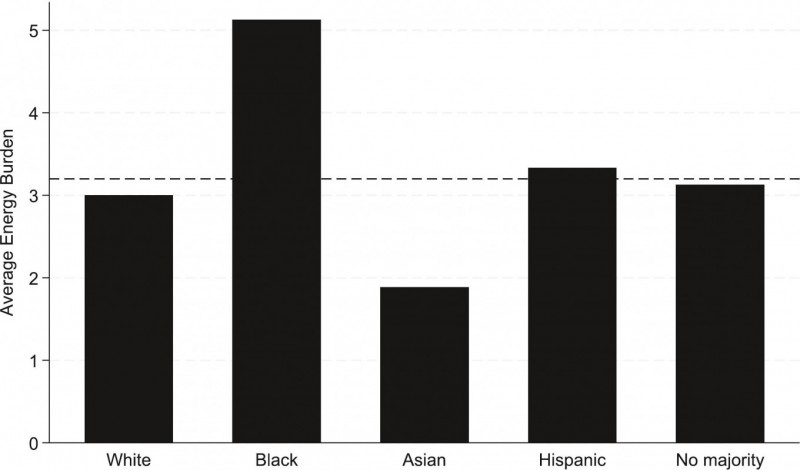Heating, cooling and powering a home isn't cheap, and new research shows that some Americans are paying a higher percentage of their hard-earned dollars to cover their energy bills.
A first-of-its-kind national study co-authored by Associate Professor George Homsy at Binghamton University, State University of New York reveals a stark reality: minority communities, namely Black Americans, are paying a disproportionately higher share of their income to power their homes.
The study, published in Energy Research & Social Science, examined energy burden - the percentage of income spent by a household on things like heating, lighting, cooking, air conditioning, etc. - across 65,000 census tracts in America. Homsy directs Binghamton University's Environmental Studies Program and is a member of the Department of Public Administration and Policy.
The average American household spends 3.2% of its income on energy. The new study, which examined data from the U.S. Department of Energy, revealed that, even when accounting for income, African Americans face a significantly larger average energy burden per household, with Latin Americans also paying slightly more.
A higher energy burden isn't just a headache. For some, it might mean the difference between being able to afford other necessities, such as medicine, transportation or healthy food.

"We often say that African Americans suffer more, but we often blame it just on income. And the reality is, there is something more there," said Homsy. "It's not just because they tend to be poor. There is something that's putting them at a disadvantage. I think what happened is it happens to be where they live."
Homsy points to older homes and higher rental rates as possible factors in these communities. Minorities are more likely to live in older homes, which tend to have higher energy burdens due to poor insulation, older appliances, etc. And because these homes are often rental units, the residents cannot make changes and take advantage of energy-saving upgrades. Thus, the issues only deepen.
"All of these things combine to put extra burden on African Americans - that's the bottom line of the paper," said Homsy.
Homsy pointed out that while some papers had looked at energy burden before, none had examined both race and income. An African American household might be earning a middle-class income, for example, but because of where they live, they might still face a higher energy burden.
Homsy said that policymakers need to put special effort into working with minority communities to alleviate the inequities caused by decades of housing discrimination. In another paper currently under review, he and a colleague interviewed sustainability officials, asking how they try to lower the energy burden of people living in rental units.
"It is harder to get to rental units where a lot of poor people live. We need to work harder to get into these communities of color," said Homsy.
The paper, "Energy burden: Exploring the intersection of race, income, and community characteristics across the United States," was co-authored by Ki Eun Kang from the Department of Public Administration at California State University, San Bernardino.







